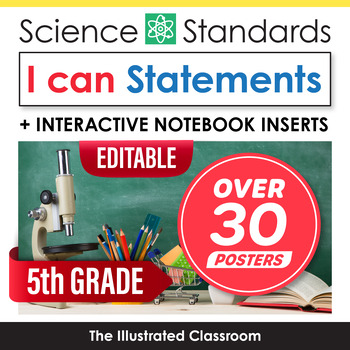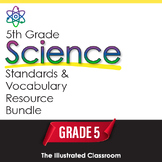5th Grade Science I Can Statements for NGSS Standards
- Zip
What educators are saying
Also included in
- Bring 5th Grade science standards & vocabulary to life with this powerful bundle of science standards & vocabulary resources. The "I can statements," word wall cards, crossword puzzles, and multiple-choice assessments are everything you need to teach and reteach all the key vocabulary wordsPrice $20.99Original Price $47.40Save $26.41
- Editable, color-coded I Can Statements for 5th Grade ELA, Math, & Science.Price $19.60Original Price $28.00Save $8.40
Description
Bring the NGSS science standards to life with these easy-to-use, color-coded, editable posters for 5th Grade Science. They are perfect for showing students, parents, and administrators the academic standard that is at the root of your lesson. The illustrations and kid-friendly language help students make sense of the standards. The full page and half page sizes makes them useful for bulletin boards, interactive notebooks, homework packets, and more. Be sure to check out the free preview for an up-close look at this fifth grade science standards resource.
WHAT'S INCLUDED
Editable
- Full Page I Can Statements
- Half Page I Can Statements
Ready to Print
- Full Page I Can Statements
- Half Page I Can Statements
- Interactive Notebook Inserts
- Printing Instructions
DESCRIPTION
These 5th grade science standards posters help "unpack" the standard and grab the attention of your students. The "I Can Statements" help students take ownership of their learning. The illustrations add interest and portray the spirit of the standard in an everyday context.
Everything in this downloadable resource can be printed on letter size (8.5" x 11") paper.







